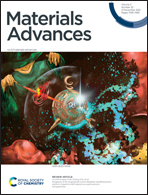Simultaneous phase control and carbon intercalation of MoS2 for electrochemical hydrogen evolution catalysis†
Abstract
Molybdenum sulfide is considered to be an alternative material to commercial platinum catalysts for the electrocatalytic hydrogen evolution reaction (HER). 1T-MoS2 has higher hydrophilicity and electronic conductivity than 2H-MoS2 and is more favorable for the HER. However, 1T-MoS2 is not stable and easily transformed into a more stable 2H phase during the synthesis process. Therefore, it is crucial to find a suitable method to synthesize highly active MoS2 HER electrocatalysts. In this work, a carbon intercalated 1T-MoS2 electrocatalyst (MoS2-2C) is synthesized via a glucose-assisted hydrothermal approach. The introduction of glucose in the synthesis not only induces the formation of active 1T-MoS2 but also modifies the electronic structure of the in-plane sites of 1T-MoS2. The electronic status of MoS2-2C is studied in detail. Our results show that the free energy of HER at the optimal adsorption site of MoS2-2C is as low as 0.10 eV. Therefore, it shows promising HER catalytic activity (η = 217 mV@10 mA cm−2) and stability in 0.5 M H2SO4.



 Please wait while we load your content...
Please wait while we load your content...